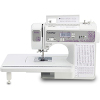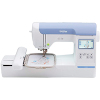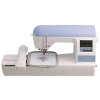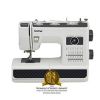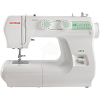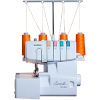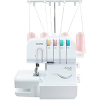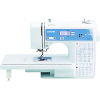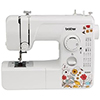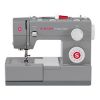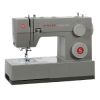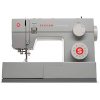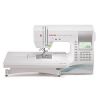Thanks to the children sewing machine, the child will learn the basics of the sewing process and cutting, get carried away with this activity, and probably love it. A large number of manufactured models will allow you to choose this sewing machine for a child at any age, even with a small budget. And this article will definitely help you with this task.
Best sewing machine for kids reviews
Janome 2212 - best sewing machine for kids
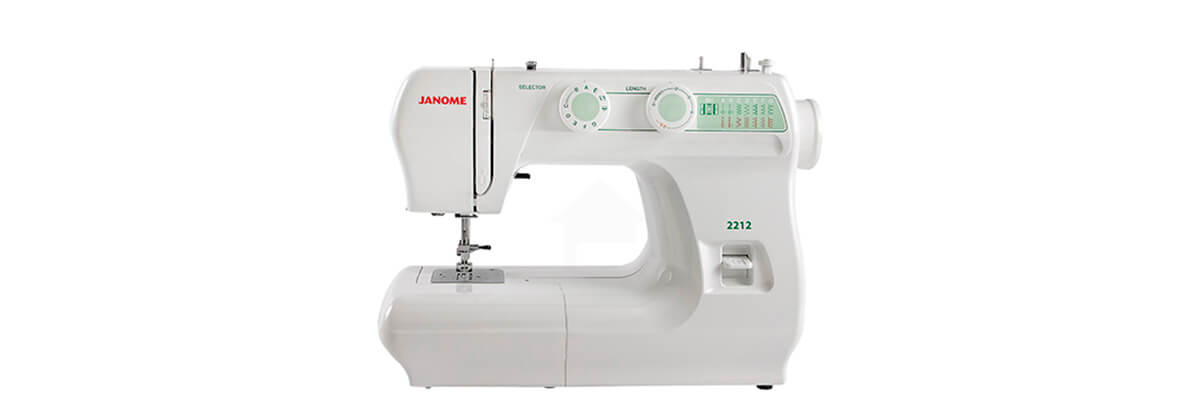
It is probably the best kids sewing machine, especially for a total beginner. Why?
It's not one of those toys going for $25.00 that breaks as soon as you plug it in, causes frustration and you end up quitting; Janome is one of the top 3 best sewing machine for kids makers in the world. They stand behind their products, and they will not disappoint you.
Very few Janomes end up in the repair shop. You want to start out with something simple so you can avoid confusion and learn the basics as I did. This machine is simple. If you have a good teacher (yeah, Youtube can be very helpful), follow the instruction manual, take your time and start with small, simple projects, you will do fine on this machine. This is why so many schools buy this very model for their sewing pupils in the home class.
It comes with a five-pack of spare universal needles size 12 and maybe six extra bobbins. You should buy needles since you should change needles every project or every 4 hours of sewing time whichever comes first.
Pros
- Easy to operate.
- It can handle some thickness in fabric.
- I did a craft project sewing gathered hand towel edges into a folded cotton fabric, and the machine didn't falter.
Cons
- The only negative I have is the lever to raise and lower the foot is only accessible with my right hand. It's located on the right side of the shank. My child is left-handed, so it's taking some adjustment for her to remember that it's a right-handed maneuver.
MICHLEY LSS-505
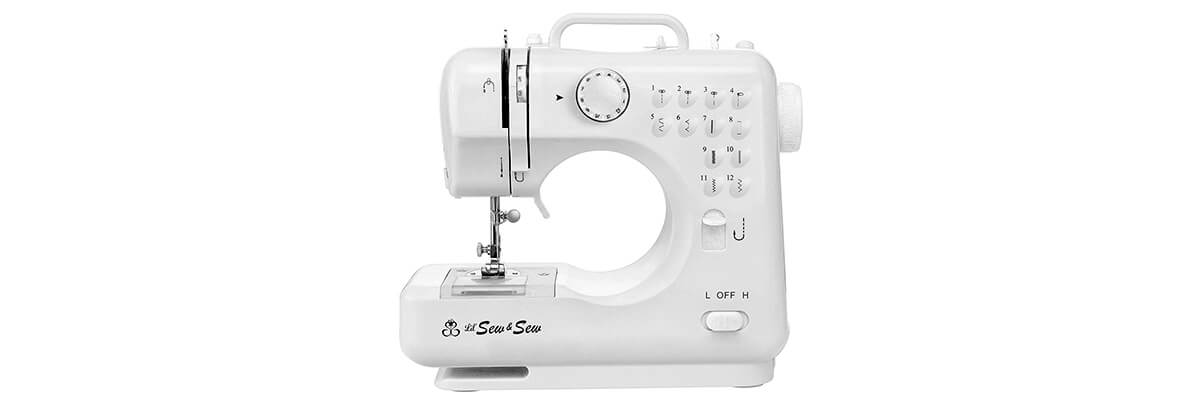
This unit is a tremendous first kid sewing machine. I had some suspicious when it arrived by the mail because it was so lightweight.
I was concerned it would vibrate all over the table, or it would be too junky to use. I was wrong. It came threaded and ready to go. I tried a couple of the stitches and the reverse on standard quilters weight cotton. It worked great.
You cannot adjust the stitch lengths. There are several stitch patterns to choose from. There are two straight stitch lengths. It is also great because you can control it with a foot pedal or by a switch right on the machine.
It has not enough light to lighting, the work surface. The motor sounds pretty intense. I agree it didn't seem to struggle basic sewing fabric.
Kids sewing machine review said you couldn’t use heavy textile materials. For a beginner sewer, cotton is the most comfortable and most economical. It'll work for that.
It is very small and compact. It also comes in a cute box to make a kid's eyes light up. Also, when threading the spots are numbered, so you know where to go next with your thread. I didn't mess with the tension knob. It was set fine.
Pros
- This is a simple, straightforward sewing machine.
- Easy drop-in bobbin (you don't have to wind bobbin separately on top of the machine).
- It does have different stitches to choose from.
Cons
- The foot pedal is "Toyish" in quality and small. I used the hand control. It was easier for me.
- I did not try the bobbin threader and thought of it after I had it all packed in the styrofoam again. I did check it out. It is made of plastic and may break easily.
- Again, kind of toy quality. I think these are both reasonable compromises for the price.
SINGER Start 1304

It is an excellent little sewing machine for children, great for beginners and those who don't really need all the bells and whistles that come with higher-end devices.
I tested it out on both muslin and flannel, and it held up well on both.
If you want to work on heavy-duty fabrics (corduroy, denim, upholstery fabric, etc.), you will need to buy the appropriate needles, likewise for the "wispier" materials such as chiffon.
When buying the materials, you should ask the staff to help you find the appropriate needles for your machine and fabrics. I appreciate this machine because it does what it says it does: it gives beginners a nice little launching pad without overwhelming them with extra features.
Pros
- I love the smooth action, the small size, and ease of use.
- The tension was correct right out of the box.
- There are only six stitches, but that is more than adequate for my needs.
Cons
- The base is robust. I'm not a sewing expert by any means, but I know my way around enough.
- I had to adjust the bobbin tension, which was annoying.
- The machine also unthreads itself easily.
Janome 001sorbet
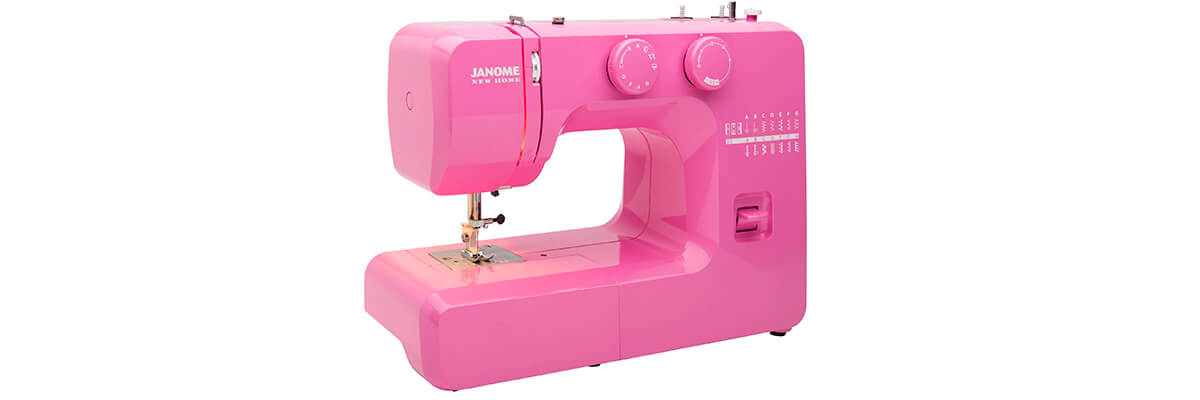
Overall this Janome model is one of the best kid friendly sewing machines, flexible that mainly delivers on what is promised in the description.
The absence of a thread cutter and front-loading bobbin design are probably the most significant drawbacks.
The flexibility and feature are the biggest positives. Thanks to the included snap-in plate, you can do free-motion quilting. The removable arm makes it easy to mend small items.
Comes with three bobbins. Nice touch. The accessories and features put it a step above a simple beginners' machine. Some might find the front-loading bobbin design hard to work with.
Stitches are good and even. The thread length is sufficient and stable. There's no thread cutter! Seems like a design oversight. The lack of a cutter is very unhandy for sewing.
Pros
- The instruction manual is easy to read and understand. Nice illustrations.
- The machine has space for two spools of thread — a helpful feature.
- The spool holders retract. Great for when you are storing the machine. Helps prevent them from being accidentally broken off.
Cons
- My initial impression of the machine after unboxing it and plugging it in was that it is very stiff. The handwheel did not turn easily, and it was difficult to get it to start sewing using just the motor.
Costway 4336999734
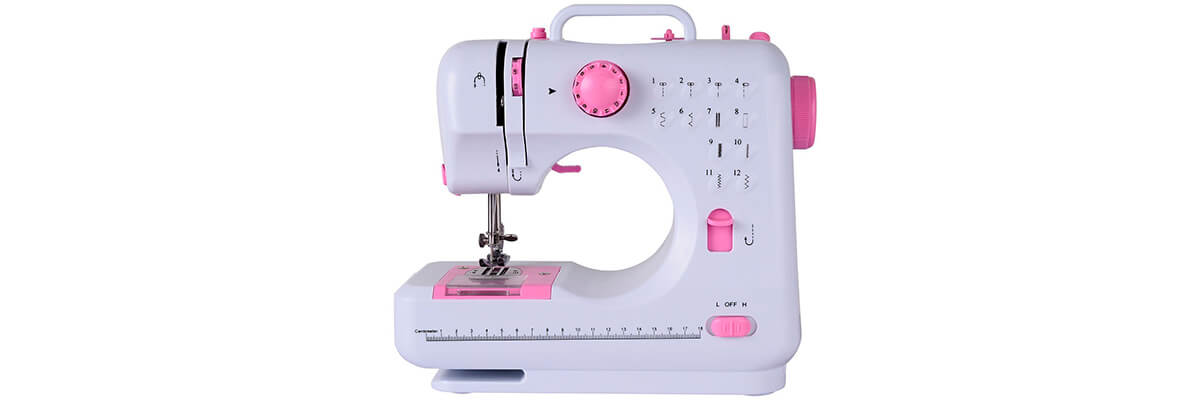
Another pretender to be one of the best kids sewing machines. It has a definite limit on the thickness that it can handle, this is the smallest one that can still throw a reverse stitch. I have gotten it to work with light canvas and fleece, just not too many layers at a time.
If the material is too thick and you find that you are bending needles, go for a stronger needle. I had to replace the pressure foot recently, and everyone tried to tell me that only the same brand names are compatible, but I found that a singer simple model foot fits perfectly.
I am surprised by how useful this very lightweight sewing machine is. I can't sew super thick fabrics (like denim) with this machine, but I can use it for all sorts of projects. I love that I can carry it easily and store it in a small space.
Pros
- It's been great for small projects and clothing repairs.
- I was surprised it even has a bobbin winder.
- Great for first-timers and small projects.
Cons
- I somehow pulled the thread out of the needle. Re-threaded it and discovered it was not picking up the bobbin thread.
- The directions are hard to read and do not help at all.
Buyers Guide
How to choose a children sewing machine
So what should you consider?
- Age. Consider when choosing how old a kid is because there are models for pupils. And there are for babies 5-6 years.
- Functionality. Do not chase a vast set of functions because the child does not need it. To begin with, 3-5 lines, threading, and zigzag will suffice.
- Security. All hazardous items must be securely fastened and hidden to prevent injury.
- Design. There are models with a frankly childish design, and there are those that repeat the usual sewing technique as much as possible (for example, Singer models).
- Price. Monitor how much a baby sewing machine costs, because buying the most expensive toy is illogical: a child can quickly lose interest in it.
- Plastic needle. It is like a real one, and it will completely pierce a non-coarse fabric, but it will not be able to injure the kid's fingers - it will simply break. The design of the foot differs power spring pressure - it is impossible to pin down and hurt their fingers; it just does not fall.
- Protection around the foot. Remember how painful it is to get a needle screw on your finger, gape? The same screw above the needle holder and the foot is closed with a fuse from inattentive girl fingers.
- Low speed. At low speed, the baby can not injure its hands. Yes, and at low-speed stitches go an order of magnitude smoother than some adults on real machines.
- Batteries. All children's equipment works on them. A sewing machine is no exception. To get an electric shock from the battery chances of a million times less than from an electric unit.
In many sets, the package includes:
- interchangeable plastic needles;
- necessary tools for the machine;
- scissors, crayons, thread;
- beautiful boxes for sewing supplies.
There are a lot of such instructions on the arrangement of doll life. The main thing is to show the child the basic principles of learning how to sew, and with the help of instructions from the set, the girl will quickly turn her room into a fashionable atelier.
What Are the Different Types of Sewing Machines For Kids?
A sewing machine for children is not just an exciting toy. Some models are miniature copies of adult machines. They can learn all the operations of machine sewing: a double and straightforward line, making turns, forward and reverse step, making seams. They have equipped with an electromechanical hand or even a foot drive, an adjustable foot, but in terms of functionality, they are not inferior to professional sewing machines.
Such devices are designed for kids of primary school age, but you can begin to learn to sew even earlier because there are safe machines designed for babies from 5 years old. Cheaper models of children's sewing machines with simple functionality and a set of operations are performed by sewing the fabric, and you can also learn how to thread the needle and wind it onto a bobbin, learn the primary basics of patterns.
What Are the Benefits and Problems of the Right Kid's Sewing Machine?
For the development of interest in modeling design and tailoring from a very young age, special children's sewing machines for girls are made. This activity will help the child develop excellent motor skills, stimulates the imagination and interest in needlework. Most of the children's models work on the same principle as professional adult devices. They can perform different types of stitches and seams, learn how to sew soft toys, aprons, napkins, and other simple fabric items. This is a functional technique that requires accuracy and skill in handling it.
The pluses of kid's sewing machines are:
- safety;
- portability;
- ease of use.
The minuses include:
- lightweights - the machine is easy to turn over;
- battery life - they discharge quickly, especially in models with light and music, and at the most inopportune moment;
- fragility - a kid of 3-4 years old will quickly break this if dropped on the floor.
-
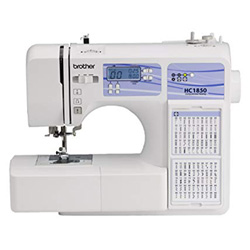
Brother HC1850
- Brother
- | 200
- 972
Popular sewing machine comparisons
